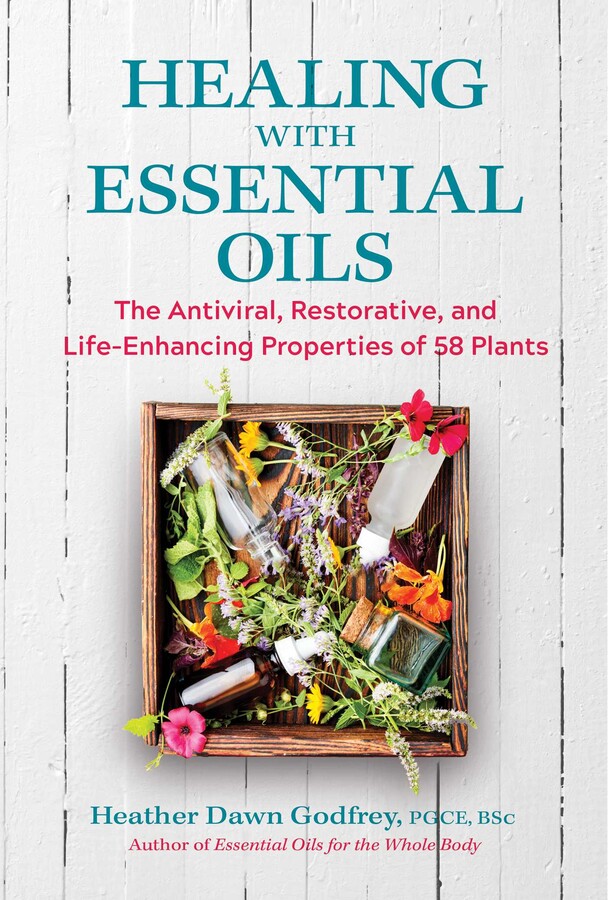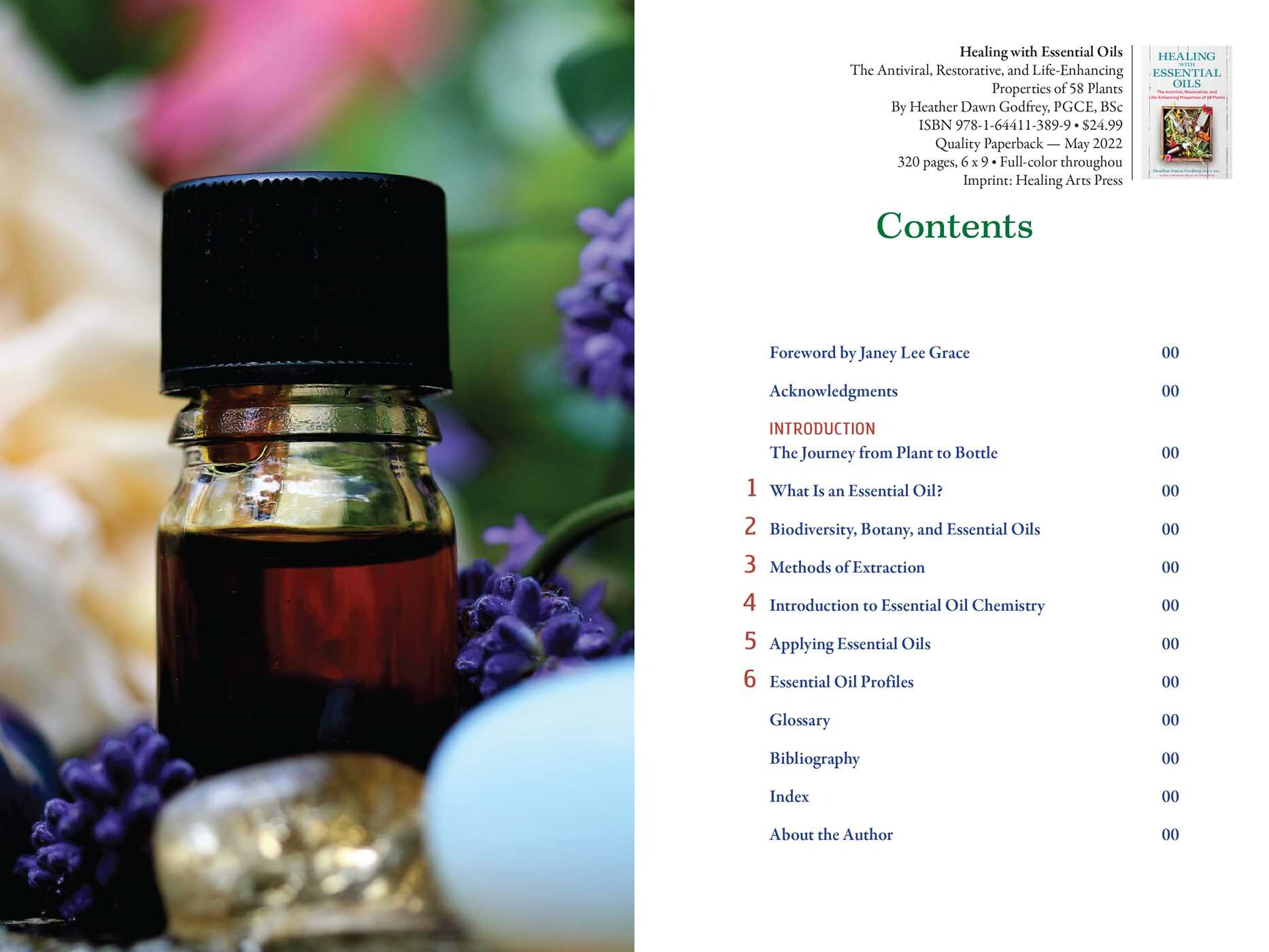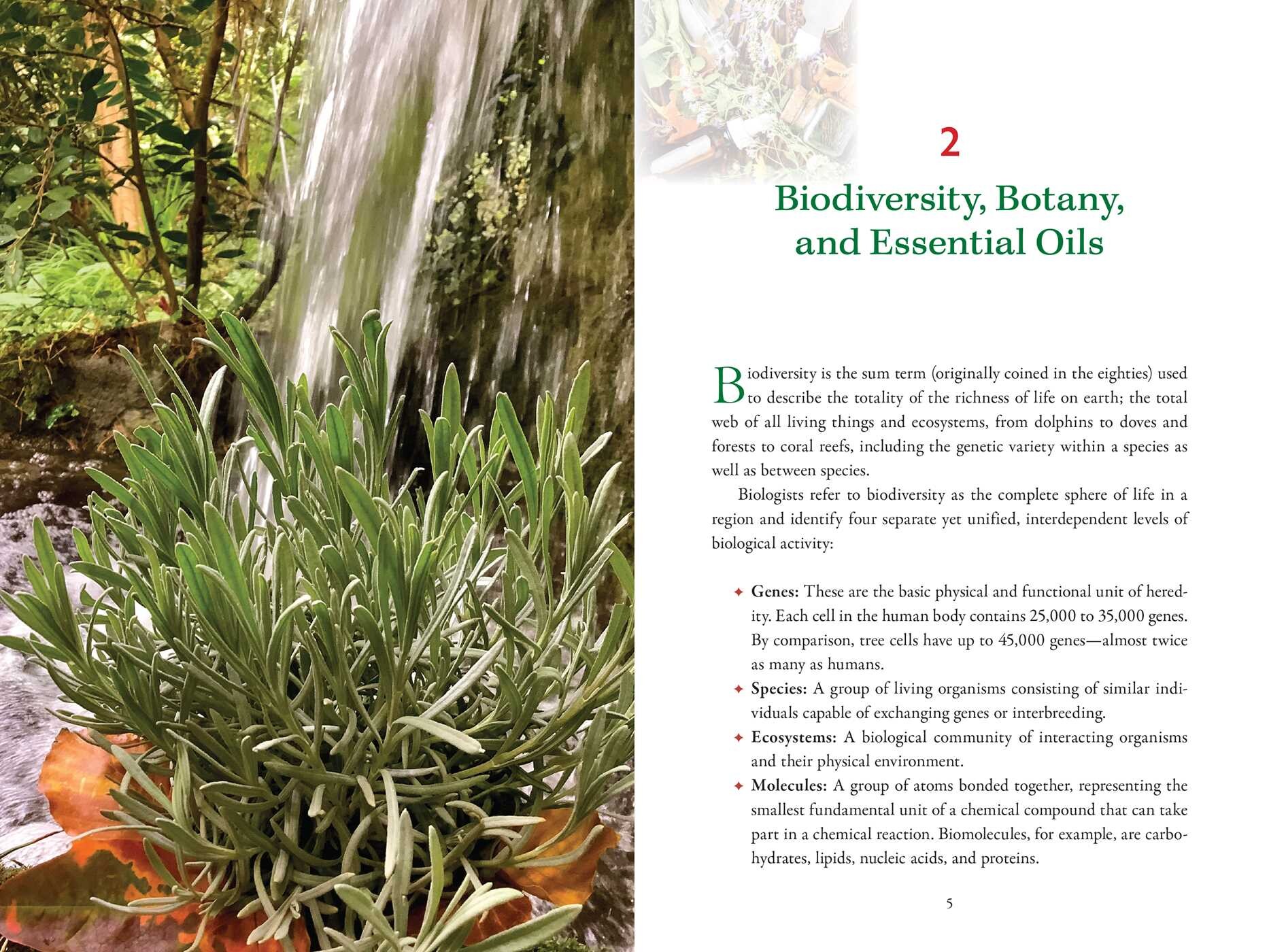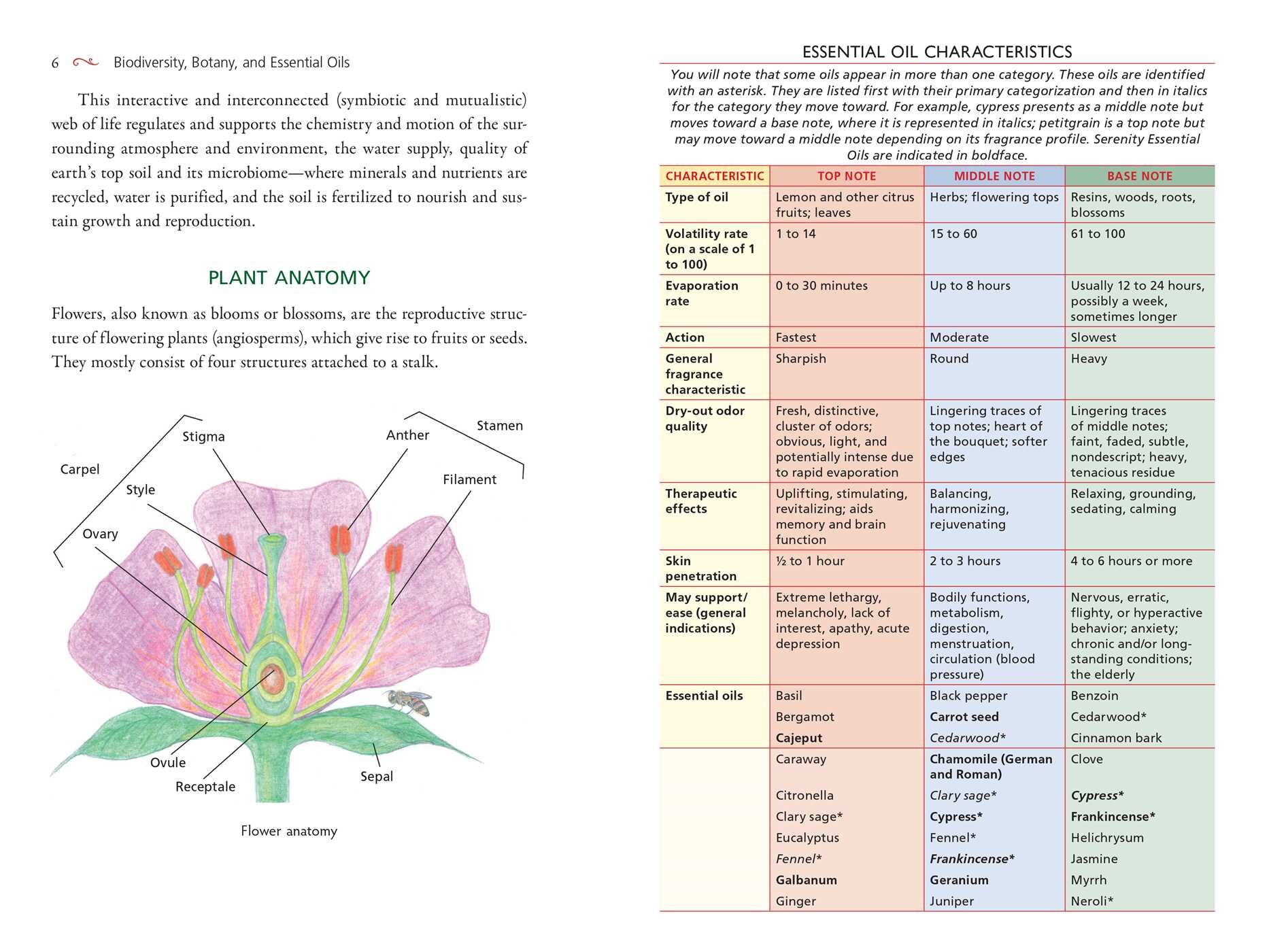Get our latest book recommendations, author news, competitions, offers, and other information right to your inbox.
Healing with Essential Oils
The Antiviral, Restorative, and Life-Enhancing Properties of 58 Plants
Table of Contents
About The Book
• Explains what an essential oil is and examines the botany of how they evolved and the various roles they play, from protecting the plant to aiding its propagation
• Provides in-depth profiles for 58 common essential oils, identifying the phytochemicals that contribute to each oil’s scent and healing qualities and its therapeutic applications, with an emphasis on antimicrobial and antiviral properties
• Discusses the healthiest and safest ways to use essential oils for self-care and the safe and appropriate use of essential oils for children, the elderly, and those with compromised immune systems
Exploring the journey of essential oils from living plant to bottle, as well as how to apply them in your own life for healing and balance, Heather Dawn Godfrey explains what an essential oil is and examines the botany of how they evolved and the various roles they play--from protecting the plant to aiding its propagation. She presents an easy-to-understand introduction to essential oil chemistry, detailing how essential oils are collected through various methods of extraction to preserve their healing properties. She then explores the healthiest and safest ways to use essential oils for self-care, including guidelines for children and the elderly as well as individuals with compromised immune systems.
The author provides in-depth individual profiles for 58 common essential oils. Each profile includes a description of the plant the essential oil is extracted from, the phytochemicals and terpenes that comprise the essential oil, and the oil’s aromatherapeutic applications. Godfrey explains how each chemical contributes to the essential oil’s overall scent profile and therapeutic qualities, with particular focus on its antimicrobial, antiviral, restorative, and life-enhancing properties. She also details their subtle energetic properties, including their connections to the chakras and elements.
Presenting an accessible yet scientifically based guide to healing with essential oils, this book provides a must-have reference for those who use essential oils at home, for health and well-being practitioners, for scent artists and blend creators, or for anyone wanting to explore the dynamic qualities of essential oils for themselves.
Excerpt
Essential Oil Chemistry
A Brief Introduction to the Science of Plant Constituents
Organic chemistry is a vast, complex, and fascinating subject merely touched upon here. Stepping along the shoreline, so to speak, this chapter takes a look at the various chemical constituents that comprise essential oils so that we may best use them in therapeutic applications.
Essential oils are typically made up of up to 250, sometimes more, individual molecules. Each constituent molecule presents its own chemical, scent, and therapeutic profile. The scent that exudes so delightfully from an essential oil does so by virtue of these volatile molecules, which evaporate at different rates and lend dynamic depth, layers, and contours to the quality of an essential oil’s odor. An essential oil’s therapeutic profile is also determined by the presence and arrangement of these molecules.
Beginning with a look at the building blocks from which molecules evolve, this chapter identifies the various chemical components that contribute to and influence the characteristic qualities of essential oils, including their scent profiles and therapeutic values.
SYNERGY
According to the Oxford Dictionary, synergy is “the interaction or cooperation of two or more organizations, substances, or other agents to produce a combined effect greater than the sum of their separate effects.” Mathematically, the phenomenon of synergy is expressed as 2 + 2 = 5. So, using this same principle, when components, whatever they be, come together and share equally, the sum can be represented as 2 + 2 = 4, indicating harmony. And where there is a negative, detracting influence, the sum can be represented as 2 + 2 = 3, indicating negative synergy or antagonism.
The molecules in essential oils appear to act harmoniously or synergistically in various ways, sometimes complementing and/or enhancing the action of one or more compounds, sometimes diluting or quenching the less desirable effects of others. Whole essential oils can also be combined or blended in a way that enhances one or more actions and quells others. For example, one study (Onawunmi et al. 1984) explored the antibacterial actions of three major constituents found in lemongrass: myrcene, neral, and geranial. The researchers observed that although myrcene itself had weak antibacterial actions, when it was combined with either alpha-citral (geranial) or beta-citral (neral), it significantly increased the respective antibacterial actions of these components. This is an example of a synergistic effect. Another study (Bassolé et al. 2010) found synergy between eugenol and linalool or menthol, which resulted in a significant increase in the antimicrobial action of these components. The combination of carvacrol and thymol, and carvacrol, thymol, and eugenol was found to increase synergistic potency in yet another investigation (García-García et al. 2011). Antimicrobial synergy was also found between whole essential oils, for example, coriander and cumin (Bag and Chattopadhyay 2015), oregano and thyme, oregano and cinnamon, oregano and tea tree, oregano and mint, peppermint and tea tree, and thyme and cinnamon (Hossain et al. 2016)
Lemongrass (Cymbopogon citratus), which contains up to 85% citral (neral and geranial) (an aldehyde), when blended with grapefruit (Citrus x paradisi), which contains up to 95% d-limonene (a monoterpene), reduces the irritant effect of citral in lemongrass. Citral is also found in lemons, but its irritant effect is quenched or quelled by the presence of limonene and pinene.
In reality, creating truly synergistic blends of essential oils is quite difficult to achieve, although not impossible. In principle, the aim of blending essential oils together is to enhance specific properties to support a desired positive outcome. Even so, in many instances when using essential oils therapeutically, a carefully selected single essential oil can work very well too. It is best to blend no more than two, three, at most four oils together when creating therapeutic blends to insure and manage the blend’s integrity. Keeping it simple definitely supports the creation of an effective additive blend, that is, 2 + 2 = 4, or harmony; this can even lead to synergy. I find that when working with clients, focusing on one outcome, and initially one signature essential oil, hones the process; it is then easy to add one or two other oils to complement that oil’s qualities. On the other hand, having too many objectives at once and blending several oils together in one blend increases the chance of overdiluting or canceling out any beneficial effects.
Of course, this doesn’t mean that blends that include several essential oils will not be successful, especially when creating perfume. Blending oils with similar antimicrobial or antiviral properties can potentiate an action. However, blending does require careful consideration and practice, and the more oils included in a blend, the greater the chance of missing or cancelling out the intended outcome. But not to worry, as there are many essential oils (and also perfumes) that are singularly potent antimicrobials and antivirals that can be used alone with good effect; tea tree, lavender, and geranium are just a few examples of single oils that each possess strong antimicrobial qualities and are also relatively safe oils to use singly.
Some of the most powerful antimicrobials and antivirals, though, are also strong irritants and potential sensitizers, and this is where blending can be particularly useful. By selectively adding other essential oils, it is possible to create a blend that balances out, quells, and calms these irritating effects (but remember, essential oils should always be added to an emollient, such as a vegetable oil or organic, scent-free lotion or cream, before using them on the body).
Potent Antimicrobial/Antiviral Blends
Some of my favorite antimicrobial/antiviral blends, which I use in an environmental diffuser, are comprised of up to seven components. These blends ease breathing and support the respiratory tract to ward off infection by many types of microbes, bacterial, viral, and fungal. Use only one drop of each essential oil in the following blends:
- cinnamon leaf, clove bud, lavender, peppermint, pine, rosemary, and thyme
- cinnamon leaf, clove bud, geranium, grapefruit, and nutmeg
- cinnamon leaf, clove bud, eucalyptus, lemon, rosemary, and tea tree
- cinnamon leaf, clove bud, lavender, peppermint, patchouli, rosemary, and orange bitter
- cinnamon leaf, clove bud, and bergamot or bitter orange
Antimicrobial/antiviral blends can also be used with a nasal inhaler. Use two drops of each oil in each of the following blends, because the amount of essential oil consumed with each inhalation is small. When using steam inhalation, use one drop of oil in each of the following blends, as more essential oil is consumed with this method:
- eucalyptus, geranium, and peppermint
- eucalyptus, lavender, peppermint, rosemary, tea tree, and thyme
- clary sage, orange bitter, patchouli, and peppermint
- geranium, lavender, and tea tree
- eucalyptus, lemon, and tea tree
- clove bud, bitter orange, and patchouli
- grapefruit, lavender, and thyme
You may have noticed that some of the oils listed in this chapter have a high eugenol (phenol) content, for example, clove bud and cinnamon leaf; or a high cineole (oxide) content, for example, eucalyptus and rosemary. Both constituents are very strong antimicrobials and antivirals, but they are also irritants to the skin, mucous membranes, and respiratory tract. However, in the blends listed above, these components are balanced and complemented by oils rich in alcohols like linalool, geraniol, and citronellol, and esters like linalyl acetate, such as lavender and geranium; others are rich in monoterpenes like limonene and alpha- and beta-pinene, such as grapefruit, lemon, orange, and pine. All of these oils are antimicrobial (among other qualities) and may support the body’s immune system to stave or prevent infection (see chapter 5 for other complementary methods to support the immune system). These are examples of additive blends, which may also be rendered synergistically.
The following chemical components found in the above-mentioned essential oils are also shown to disrupt the cell membranes of bacteria microbes, or cells hyjacked by viruses, causing leakage of the cells’ ions and inactivation, or cell death, of microbes (Langeveld et al. 2013).
carvacrol
cinnamic acid
thymol
eugenol
rho-cymene
gamma-terpinene
cinnamaldehyde
Other whole essential oils shown to similarly disrupt cell integrity and provide antibacterial and anitviral protection (Chouhan et al. 2017) include:
garlic (diallyl trisulfide, diallyl disulphide)
ginger (zingerberene, curcumene)
may chang (geranial, neral, limonene)
fennel (estragole, limonene)
black pepper (limonene)
African basil (estrogole, camphor, limonene)
turmeric leaf and root (alpha-phellandrene, camphor)
oregano (carvacrol, thymol)
horse mint (menthol, menthone)
Other antimicrobial/antiviral combinations could have a refreshing citral theme, for example, using lemongrass or may chang as signature oils rich in aldehydes such as geranial or neral, to which are added complementary monoterpene-rich oils such as grapefruit or orange bitter, along with other antimicrobial/antiviral middle and base-note oils to further quell any irritancy, can balance the scent and add tenacity to the blend. Experimenting with different essential oil combinations will inspire your creative spirit and aid in familiarizing yourself with their individual characteristic qualities and personalities.*
Other essential oils that have strong to moderate antimicrobial/ antiviral properties include the following:
bergamot
myrtle
carrot seed
palmarosa
cassia (strong)
pine
citronella
rose
fennel (sweet and bitter)
sandalwood (Australian)
frankincense
thyme, red (strong)
melissa/lemon balm
vetivert
Always remember to check out the individual profile and safety criteria of an essential oil before using it.
Product Details
- Publisher: Healing Arts Press (August 18, 2022)
- Length: 352 pages
- ISBN13: 9781644113899
Browse Related Books
Raves and Reviews
“A dynamic book for the student interested in the science of aromatherapy, the author takes you from seed to distillation and breaks down, in detail, the chemical composition of each oil profiled. A solid reference work.”
– Candice Covington, author of Vibrational Nutrition and Essential Oils in Spiritual Practice
“A brilliant and informative must-have book for anyone looking for a natural way to heal and restore and create harmony and balance in their life.”
– Sue Stone, author, TV presenter, and transformational leader of the Sue Stone Foundation
“This highly recommendable book gives grounded scientific knowledge on essential oils and all the practical advice one needs to use them efficiently to restore and maintain health.”
– Christopher Vasey, N.D., author of Natural Antibiotics and Antivirals
Resources and Downloads
High Resolution Images
- Book Cover Image (jpg): Healing with Essential Oils Trade Paperback 9781644113899











